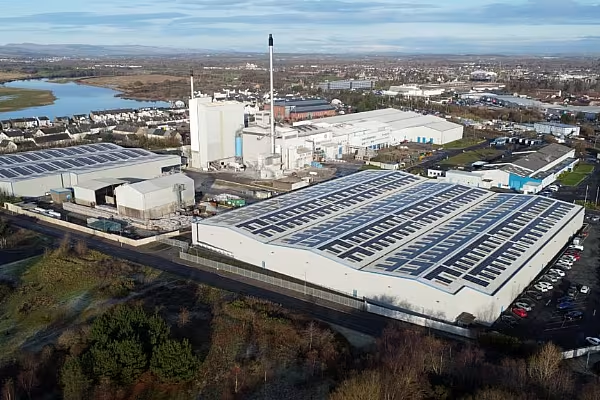Ardagh Glass Packaging-Europe (AGP-Europe) has set up a new solar installation at its glass facility in Irvine, Scotland.
The installation has commenced renewable electricity production and Ardagh Group expects to reduce 356 tonnes of CO2 emissions annually from this initiative, the company added.
During the summer months, electricity generated by the solar panels will meet up to 25% of AGP-Irvine’s total electricity requirements.
The remaining renewable electricity used at the facility will continue to be supplied by a third party, Ardagh added.
'Decarbonising Glass Containers'
Graeme Shepherd, plant director at AGP-Irvine stated, “This solar installation is another step forward in enhancing the sustainability of our operations at Irvine, as well as reducing the amount of electricity we take from the grid.
“It shows our commitment to decarbonising the glass containers we produce, while maintaining the highest standards of quality and excellence.”
AGP teamed up with ESB Energy for the project, which saw the installation of a 1.75MWp solar PV system comprising 3,842 panels on two warehouse rooftops at the facility.
It will generate approximately 1.584MWh of electricity each year, supporting the production of over 350 million glass bottles for global spirits brands.
'Continued Commitment'
Pat Fenlon, executive director of customer solutions at ESB Energy commented, “The successful deployment of the 1.75MWp solar array at Ardagh Irvine represents our continued commitment to supporting sustainability and innovation projects for our customers.
“Our continued monitoring and maintenance ensures optimal performance, which can help support Ardagh Irvine to focus on the core aim of reducing carbon emissions.”
The project in Scotland will contribute to Ardagh Group’s strategy to use 100% renewable electricity by 2030 and follows the launch of solar power installations in Ardagh’s glass and metal production facilities in the Netherlands.
Ardagh Group plans to install more solar power at its facilities across Europe in the coming years as part of its 2030 targets.











